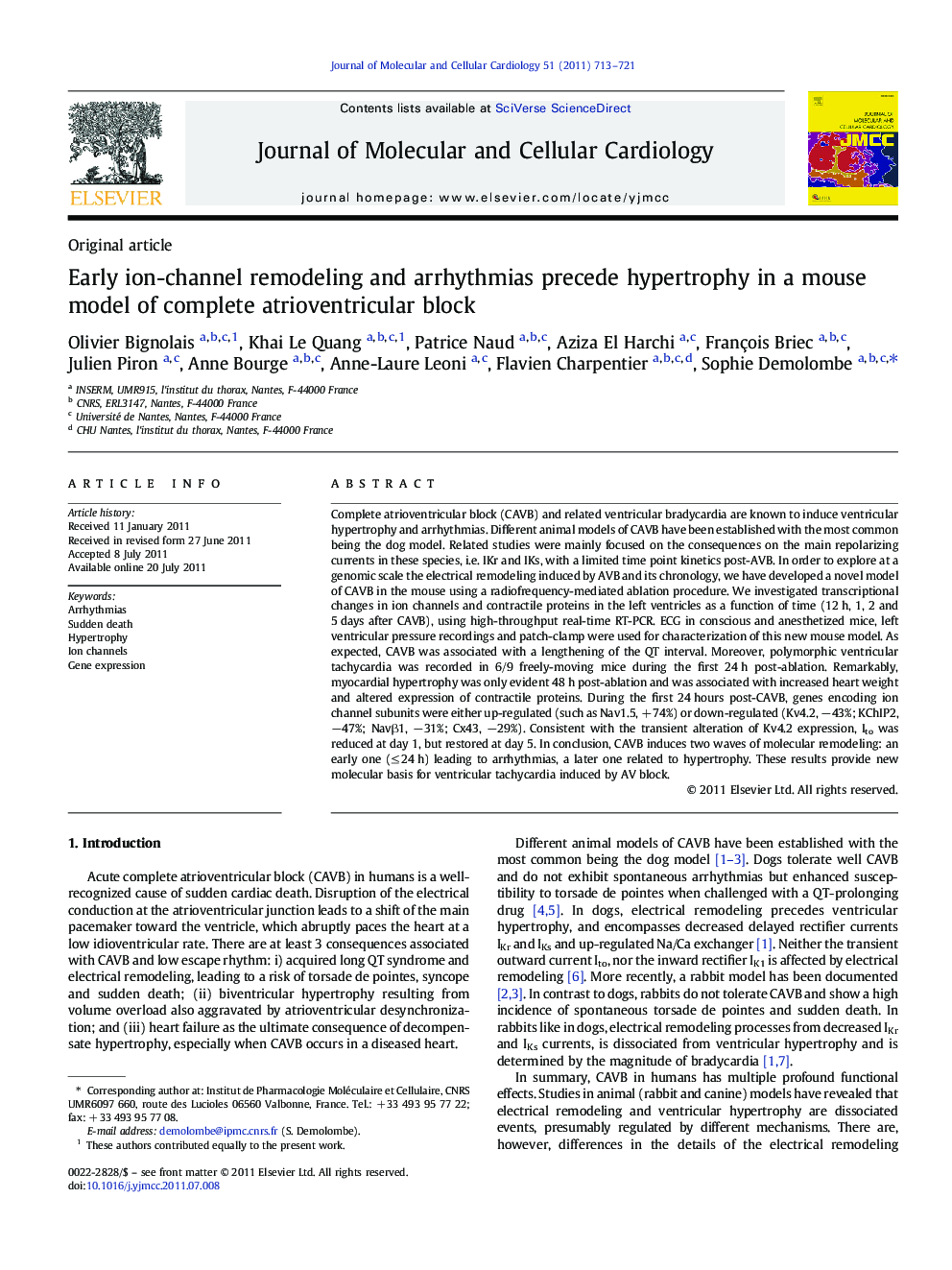| Article ID | Journal | Published Year | Pages | File Type |
|---|---|---|---|---|
| 2190745 | Journal of Molecular and Cellular Cardiology | 2011 | 9 Pages |
Complete atrioventricular block (CAVB) and related ventricular bradycardia are known to induce ventricular hypertrophy and arrhythmias. Different animal models of CAVB have been established with the most common being the dog model. Related studies were mainly focused on the consequences on the main repolarizing currents in these species, i.e. IKr and IKs, with a limited time point kinetics post-AVB. In order to explore at a genomic scale the electrical remodeling induced by AVB and its chronology, we have developed a novel model of CAVB in the mouse using a radiofrequency-mediated ablation procedure. We investigated transcriptional changes in ion channels and contractile proteins in the left ventricles as a function of time (12 h, 1, 2 and 5 days after CAVB), using high-throughput real-time RT-PCR. ECG in conscious and anesthetized mice, left ventricular pressure recordings and patch-clamp were used for characterization of this new mouse model. As expected, CAVB was associated with a lengthening of the QT interval. Moreover, polymorphic ventricular tachycardia was recorded in 6/9 freely-moving mice during the first 24 h post-ablation. Remarkably, myocardial hypertrophy was only evident 48 h post-ablation and was associated with increased heart weight and altered expression of contractile proteins. During the first 24 hours post-CAVB, genes encoding ion channel subunits were either up-regulated (such as Nav1.5, + 74%) or down-regulated (Kv4.2, −43%; KChIP2, −47%; Navβ1, −31%; Cx43, −29%). Consistent with the transient alteration of Kv4.2 expression, Ito was reduced at day 1, but restored at day 5. In conclusion, CAVB induces two waves of molecular remodeling: an early one (≤ 24 h) leading to arrhythmias, a later one related to hypertrophy. These results provide new molecular basis for ventricular tachycardia induced by AV block.
► Novel mouse model of CAVB using a radiofrequency-mediated ablation procedure. ► CAVB induces early (≤ 24 h) spontaneous polymorphic ventricular tachycardia. ► CAVB induces a later structural remodeling and adaptive cardiac hypertrophy. ► New molecular basis at the genome-wide level for ventricular tachycardia. ► Decrease in prominent repolarizing current is central to the electrical remodeling.
